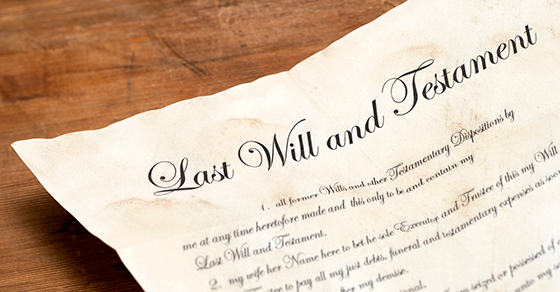Despite what you might think, estate planning isn’t limited to only the rich and famous. In fact, your family is likely to benefit from a comprehensive plan that divides your wealth, protects your well-being and provides a compass for your family’s future.
Dividing your wealth
Estate planning is often associated with the division of your assets, and this is certainly a key component. It’s typically accomplished, for the most part, by drafting a will, which is the foundation of an estate plan.
With a valid will, you determine who gets what. It can cover everything from the securities in your portfolio to personal property, such as cars, artwork or other family heirlooms.
In contrast, if you die without a will — referred to as dying “intestate” — state law will control the disposition of your assets. This may result in unintended consequences. For example, children from a prior marriage may be excluded if state law dictates that all assets are to go to a surviving spouse.
In addition, you’ll need to name the executor of your estate. He or she will be responsible for carrying out your wishes according to your will. Your executor may be a professional, a family member or a friend. Also, designate a successor in case your first choice is unable to handle the duties.
Understanding probate
If your estate plan includes only a will, your estate will most likely have to go through probate. Probate is a court-supervised process to protect the rights of creditors and beneficiaries and to ensure the orderly and timely transfer of assets. The complexity and duration of probate depends on the size of your estate and state law.
If you transfer assets to a living trust, those assets are exempt from the probate process. Thus, a living trust may supplement a will, giving heirs fast access to funds.
Protecting your well-being
An estate plan can help ensure that your long-term health care is handled in the way that you wish. Notably, you can create a health care power of attorney. It grants another person — for example, a family member or a friend — the right to act on your behalf in the event you’re incapacitated. A power of attorney may be coordinated with a living will specifying your wishes in end-of-life situations, along with other health care directives.
Providing a compass
Finally, an estate plan can accomplish a variety of other objectives, depending on your preferences and circumstances. If you have minor children, you can name a guardian in your will in the event of your premature death. Without such a provision, the courts will appoint a guardian, regardless of your intent.
Your estate plan can also protect against creditors, primarily through trusts designed for these purposes. Accordingly, while trusts were often seen mainly as tax-saving devices in the past, they can fulfill a multitude of other roles.
Let the planning begin
Now that the need for an estate plan is clear, don’t delay any longer. Contact us to begin the process or if you have any questions.







